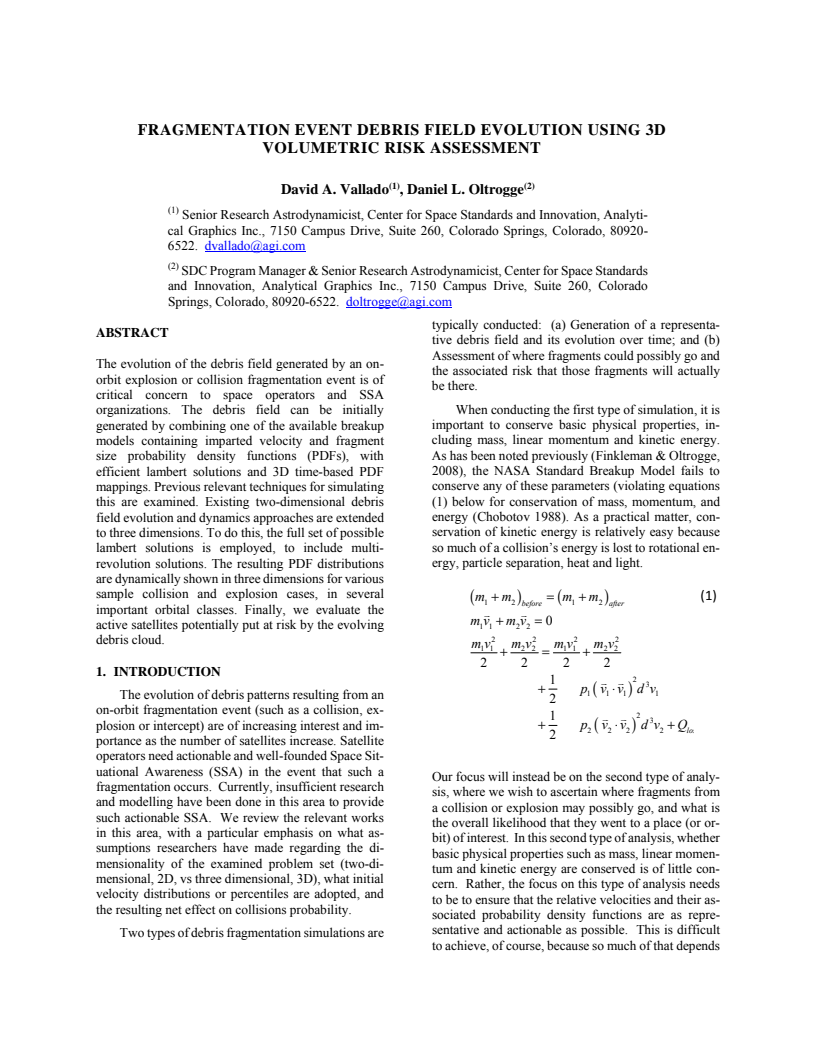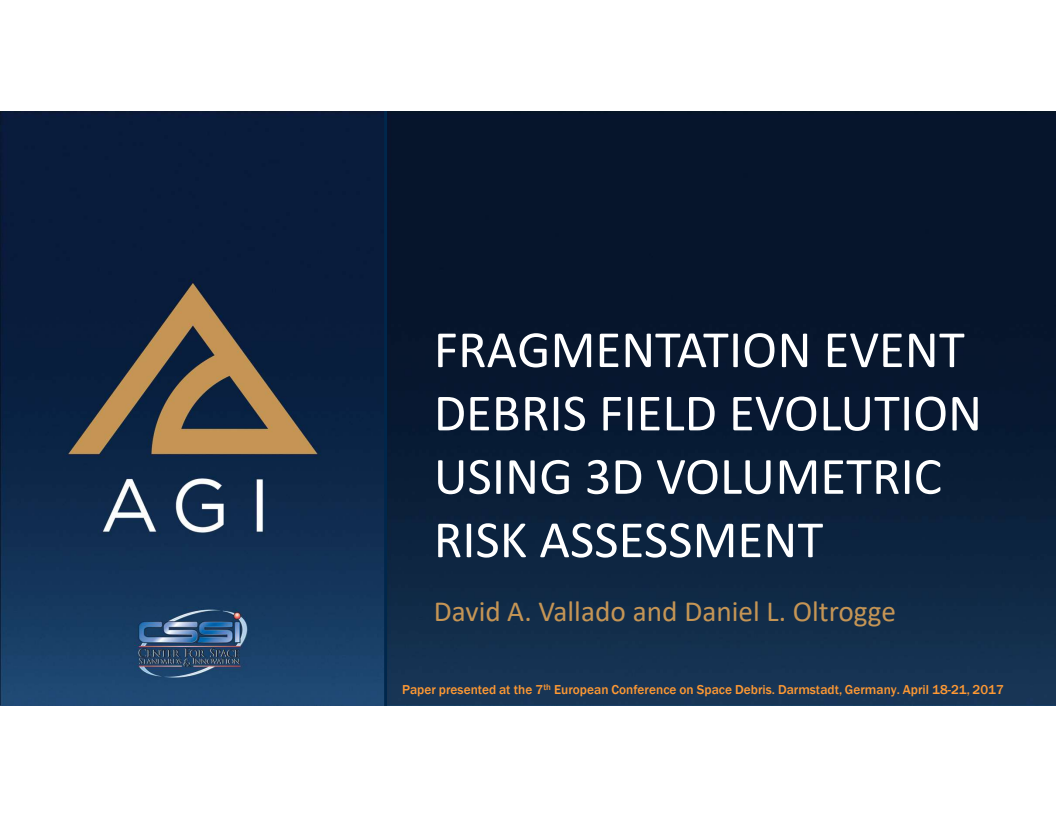Fragmentation event debris field evolution using 3d volumetric risk assessment


Id: 269
Type: Conference paper
Published: 04/24/2018
Event: 7th European Conference on Space Debris 2017
Authors:
Click an author to filter the list of related assets below.Abstract:
The evolution of the debris field generated by an on-orbit explosion or collision fragmentation event is of critical concern to space operators and SSA organizations. The debris field can be initially generated by combining one of the available breakup models containing imparted velocity and fragment size probability density functions (PDFs), with efficient lambert solutions and 3D time-based PDF mappings. Previous relevant techniques for simulating this are examined. Existing two-dimensional debris field evolution and dynamics approaches are extended to three dimensions. To do this, the full set of possible lambert solutions is employed, to include multi-revolution solutions. The resulting PDF distributions are dynamically shown in three dimensions for various sample collision and explosion cases, in several important orbital classes. Finally, we evaluate the active satellites potentially put at risk by the evolving debris cloud.
Keywords:
Click a keyword to filter the list of related assets below.Citation:
Vallado, D.A. and Oltrogge, D.L., “Fragmentation Event Debris Field Evolution Using 3d Volumetric Risk Assessment,” ESA Conference on Space Debris, ESDC-17-738, Darmstadt, Germany, 24 April 2017, accessible at https://comspoc.com/Resources/Content/Private/C-20220424T103010/Paper/20170424_Frag_Event_Debris_Field_Evolution_Using_3D_Volumetric_Final_ESDC-17-738.pdf
Papers with related authors:

Using Spacebook and Cesium to Promote and Enhance Flight Safety
Read More
Actionability and Persistence Of Conjunction Data
Read More
Actionability and Persistence of Conjunction Data
Read More
Practical issues with using a full gravity field
Read More
Deep operator and SSA collaboration for space sustainability
Read More
Synthetic Covariance Production Using a New Digital Approach
Read More
Actionability and Persistence of Conjunction Data
Read More
DEEP OPERATOR AND SSA COLLABORATION FOR SPACE SUSTAINABILITY
Read More

Russian ASAT Debris Cloud Evolution and Risk
Read More
Results of comprehensive STCM data fusion experiment
Read More
Debris Risk Evolution And Dispersal (DREAD) for post-fragmentation modeling
Read More
Application of New Debris Risk Evolution And Dissipation (DREAD) Tool to Characterize Post-Fragmentation Risk
Read More






LEO satellite behavior during the May 2024 Gannon geomagnetic storm
Read More
Contrasting the Inflection Points and Efforts in Space Traffic Coordination and Management
Read More
Addressing the debilitating effects of maneuvers on SSA accuracy and timeliness
Read More






Sequential Processing of ILRS Observations – Experiences over the last 5 years
Read More


Orbital Strategies to Mitigate the Solar Exclusion Effect on Space-Based Observation of the Geosynchronous Belt
Read More
New Consolidated Files for Earth Orientation Parameters and Space Weather Data
Read More
Updated Analytical Partials for Covariance Transformations and Optimization
Read More
Sequential Orbit Determination Using Satellite Laser Ranging
Read More
Improved SSA through orbit determination of Two Line Element Sets
Read More


Evaluating Gooding Angles-only Orbit Determination of Space Based Space Surveillance Measurements
Read More
ORBIT DETERMINATION ISSUES AND RESULTS TO INCORPORATE OPTICAL MEASUREMENTS IN CONJUNCTION OPERATIONS
Read More


Videos with related keywords:
Debris spread resulting from a hypothetical GEO collision.
Watch VideoCOMSPOC simulation of Chinese ASAT engagement of Fengyun spacecraft, including discrete fragment breakup and post-fragmentation debris cloud evolution.
Watch VideoCOMSPOC simulation of Mission Shakti ASAT engagement, discrete fragment breakup, and post-fragmentation debris cloud evolution.
Watch VideoCOMSPOC simulation of Mission Shakti ASAT engagement post-fragmentation debris cloud evolution.
Watch Video
